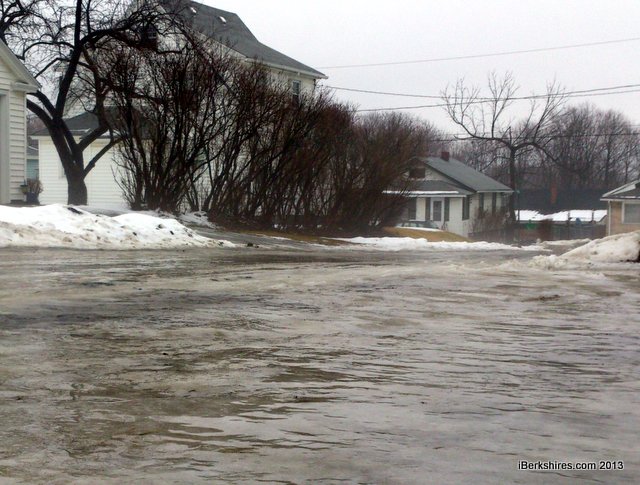Expert Driving Tips For Icy RoadsBy Andy McKeever, iBerkshires Staff
02:01PM / Wednesday, January 30, 2013 | |
|

Berkshire County residents are dealing with slick and icy roads.
|
PITTSFIELD, Mass. — With temperatures on the increase this week, the roads are just going to get more dangerous.
According to Bridgestone Tires' Winter Driving School Director Mark Cox, the colder the temperatures are in the winter, the better traction vehicles have. It is when the temperature hovers near 32 degrees that the "free water" creates slick conditions.
"Over the course of a trip, it is important to keep an eye on the thermometer," Cox said in a phone interview Wednesday morning from the school in Steamboat Springs, Colo.
In his career as a rally and ice car racer, Cox has seen his share of slick conditions and has become a specialist in low-traction conditions. The trick to handling icy roads is to use one of the vehicle's controls — brakes, accelerator and steering wheel — at a time, he said.
"It is amazing how simple it is but a lot of people have difficulty doing it," Cox said.
Don't steer while accelerating and only brake if you are in a straight line, he said. Cox also reminds people that on snow and ice, it takes four to 10 times longer to stop.
While those tips may help drivers avoid losing traction, Cox also has tips for drivers who find themselves skidding.
Step one is to identify which type of skid — either front wheel or rear wheel. If a front-wheel skid, it is likely caused by a driver trying to turn. Cox said to let off the gas, turn the wheel straight and wait to regain traction before entering the corner.
"That correction is really counterintuitive because if you are turning right to avoid a cliff, you have to turn back toward the cliff to regain traction," Cox said.
A rear-wheel skid has a different type of correction, he said, and those are likely caused by a driver hitting the brakes too hard — Cox uses an example of a driver nearly passing a highway exit.
This correction is the "steer into the skid" mantra driving schools across the country preach but Cox modifies it to say "steer where you want the front of the car to go." Additionally, Cox explains that the best way to get traction is to move weight onto the rear wheel by slightly accelerating.
Even drivers with years of experience in the snow can have trouble on winter roads because "you simply get rusty," Cox said. He advises drivers to "put down the phone, turn down the radio and focus on driving."
"A lot of drivers think of a car as a way to get from point A to point B and don't develop the skills to be a good driver," Cox said.
He also recommends keeping an eye on the condition of the tires because being "unprepared is just as dangerous as going too fast." Worn or out-of-season tires can decrease the vehicle's ability to handle snow and ice.
|

 MEMBER SIGN IN
MEMBER SIGN IN
 MEMBER SIGN IN
MEMBER SIGN IN